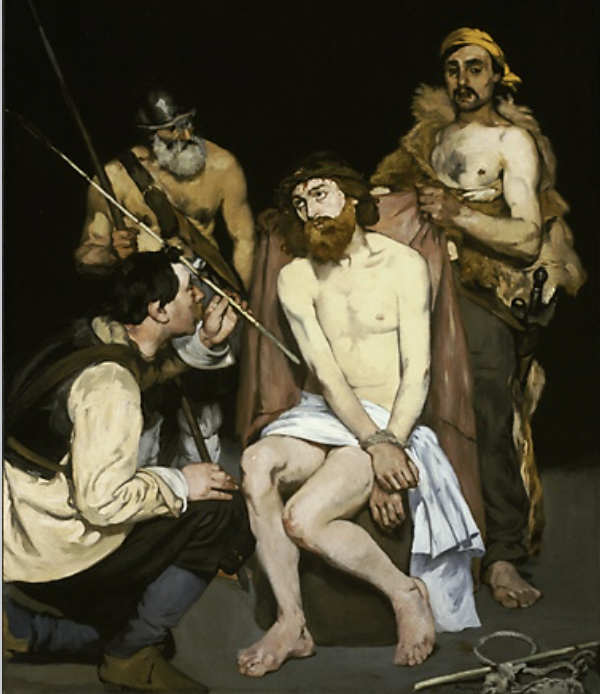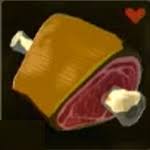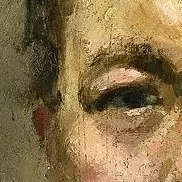MANY PROGRESSIVE mid-nineteenth-century artists, including Gustave Courbet, felt it was dishonest to paint things that could not be observed at first hand: for example, angels with wings. In fact, “Religious painting has disappeared,” pronounced one critic of the Salon of 1857. Not surprisingly, Manet’s The Dead Christ, with Angels provoked both surprise and anger when it was exhibited at the Salon of 1864.
In the passage from the Gospel of John referred to in an inscription on a rock in Manet’s painting, Christ’s disciples entered his tomb and found no trace of his body there, but instead two angels at the head and feet of the shroud. Recently scholars have suggested that Manet included the dead body of Christ in his picture because he had been impressed by Ernest Renan’s best-selling book La Vie de Jésus (1863), in which the author claimed that Christ was a man, not a supernatural being.
There are other anomalies in the painting: for example, Christ’s wound is in his left side, and, though Baudelaire pointed out the mistake prior to the Salon, Manet did not correct it.
Nevertheless, criticism was not all adverse. Manet’s advocates in the press compared his ability to paint the human figure to the skill of the Renaissance masters upon whose compositions The Dead Christ, with Angels is closely based.
Manet’s previously exhibited works had frequently been found lacking in psychological characterization, but this Christ conveys both suffering and majesty, and the pity and sorrow of the angels are equally moving.
According to Antonin Proust, his lifelong friend, Manet always wanted to depict the Crucifixion. Although that project was never realized, The Dead Christ, with Angels and The Mocking of Christ (1865, Art Institute of Chicago) indicate what enormous expressive powers the painter could bring to religious subjects.
The Mocking of Christ - Manet (1865)

Citation: Impressionist and post impressionist masterpieces from the national gallery of art p.32



